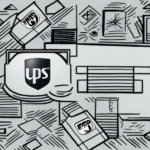How to Get Better UPS Shipping Rates
As a business owner or someone managing your company's shipping and logistics operations, keeping shipping costs low is paramount. UPS (United Parcel Service) is a widely used shipping carrier globally, but their rates can be high, potentially impacting your profit margins and market competitiveness. In this article, we delve into strategies for securing better UPS shipping rates. We’ll cover tips for negotiating with UPS, achieving volume shipping, optimizing packaging, and more, supported by the latest data and authoritative sources.
Key Statistics on UPS Shipping Costs
According to the UPS Global Trade Insights, businesses spend billions annually on shipping costs, making rate optimization a critical component of operational efficiency.
Understanding the Factors That Affect UPS Shipping Rates
Before strategizing on how to reduce UPS shipping rates, it's essential to comprehend the factors influencing these rates. UPS rates are influenced by several elements, including:
- Weight and Dimensions: Heavier and larger packages incur higher costs.
- Shipping Distance: Longer distances typically result in higher rates.
- Origin and Destination: Locations impact the rate based on geographical zones.
- Mode of Transportation: Ground, air, and ocean shipping options vary in cost and speed.
- Additional Services: Services like tracking, insurance, and delivery confirmation add to the cost.
Moreover, the type of item being shipped can affect rates. Items requiring special handling, such as hazardous materials or oversized goods, demand specific packaging and processing, increasing costs. Additionally, higher-value items may necessitate extra insurance, further elevating shipping expenses.
Tips for Negotiating with UPS to Get Better Rates
Negotiating directly with UPS is a crucial step in securing favorable UPS shipping rates. Here’s how you can effectively negotiate:
- Leverage Volume: Use your historical shipping data to demonstrate your shipping patterns and volumes to negotiate better rates.
- Optimize Packaging: Reduce package dimensions to lower shipping costs.
- Long-Term Commitment: Show your potential as a long-term customer to gain favorable terms.
- Alternative Shipping Options: Explore UPS’s various services like ground, air, and international shipping to find the most cost-effective options.
Regularly monitor your shipping expenses and compare them with industry benchmarks. This data can strengthen your negotiation position with UPS and other carriers.
The Importance of Volume Shipping and How to Achieve It
Volume shipping is a powerful strategy for securing better UPS rates. UPS provides significant discounts for businesses that ship larger volumes or more frequently. To achieve volume shipping:
- Bundle Orders: Consolidate multiple orders into a single shipment.
- Optimize Schedules: Plan shipping schedules to maximize efficiency.
- Reduce Returns: Implement strategies to minimize the number of returns.
Utilizing shipping software that integrates with UPS can automate your shipping processes, reduce errors, and manage shipping volumes effectively. Tools like ShipStation offer real-time tracking and analytics to refine your shipping strategy.
Using Technology to Streamline Shipping Processes and Reduce Costs
Integrating technology into your shipping operations can significantly reduce costs and enhance efficiency. Automated software solutions can:
- Optimize package dimensions
- Generate precise shipping labels
- Track packages in real-time
ShipStation is a prime example of software that centralizes shipping orders from multiple platforms, ensuring accurate package dimensions and leveraging the best carrier rates. Such technologies not only save time but also minimize errors, leading to cost savings and improved customer satisfaction.
The Benefits of Outsourcing Shipping and Logistics to Third-Party Providers
Outsourcing to third-party logistics providers (3PLs) can offer substantial savings and expertise. 3PLs can negotiate competitive rates on your behalf and manage shipping operations efficiently. Benefits include:
- Cost Savings: Access to bulk shipping discounts.
- Expertise: Specialized knowledge in logistics and shipping optimization.
- Efficiency: Streamlined operations allowing you to focus on core business activities.
Choosing a reputable 3PL requires due diligence to ensure they can meet your specific shipping needs effectively.
How to Optimize Packaging to Reduce Shipping Costs
Effective packaging optimization can lead to significant shipping cost reductions. Strategies include:
- Use Appropriate Packaging: Select packaging that fits the product’s size and weight to avoid excess dimensions.
- Eco-Friendly Materials: Opt for sustainable packaging options that can also lower costs.
- Automated Packaging Systems: Implement systems that accurately measure and cut materials to minimize waste and reduce package weight.
Automated packaging not only streamlines the packing process but also reduces manual labor and errors, contributing to overall cost savings.
The Impact of Fuel Surcharges and How to Minimize Them
Fuel surcharges are additional costs that fluctuate with fuel prices, impacting overall shipping expenses. To minimize these surcharges:
- Ship During Off-Peak Hours: Timing your shipments when fuel prices are lower.
- Consolidate Shipments: Reduce the number of shipments to lower the cumulative fuel surcharge.
- Negotiate Fixed Rates: Work with UPS to secure fixed fuel rates.
Understanding that fuel surcharges are standard across carriers like FedEx and DHL can help you compare and negotiate better terms.
Leveraging Discounts and Promotions for Even Greater Savings
UPS offers various discounts and promotions based on factors such as seasonal demand, shipping volume, and frequency. To maximize these savings:
- Identify Relevant Promotions: Choose promotions that align with your shipping patterns.
- Compare with Other Carriers: Evaluate UPS promotions against those of other shipping carriers to ensure you're getting the best deal.
- Review Terms and Conditions: Ensure you meet all requirements to take full advantage of discounts.
Additionally, UPS provides tools and resources such as online shipping platforms and customized options to further reduce costs and optimize your shipping strategy.
Tracking and Analyzing Shipping Data to Continuously Improve Rates
Continuous improvement of your shipping strategy relies on diligent tracking and analysis of shipping data. By leveraging data analytics, you can:
- Identify Cost Drivers: Understand what factors are contributing to high shipping costs.
- Predict Shipping Needs: Use trends to forecast future shipping volumes and requirements.
- Optimize Packaging and Routes: Make data-driven decisions to enhance efficiency and reduce expenses.
Implementing advanced shipping software can aid in collecting and analyzing comprehensive shipping data, facilitating informed decision-making to continually secure better rates.
The Role of Customer Service in Securing Better UPS Rates
Exceptional customer service is pivotal in negotiating favorable UPS shipping rates. Building a strong relationship with UPS representatives can lead to:
- Better Negotiation Outcomes: Friendly and professional relationships can enhance your bargaining power.
- Prompt Issue Resolution: Efficient handling of any shipping-related problems ensures smoother operations.
- Tailored Solutions: Customized support based on your business’s unique needs.
Maintaining open communication with UPS and clearly conveying any changes in your shipping volume or schedule can further improve your chances of securing advantageous rates.
Best Practices for Managing Returns and Minimizing Their Impact on Shipping Costs
Efficient management of returns can significantly reduce shipping-related expenses. Implement the following best practices:
- Streamline Return Processes: Simplify the steps customers need to take to return items.
- Reduce Return Rates: Improve product descriptions and quality to minimize the likelihood of returns.
- Optimize Packaging for Returns: Use packaging that is easy and cost-effective to reuse for return shipments.
- Offer Convenient Return Options: Provide various return methods that are both customer-friendly and cost-effective.
Collaborate with UPS to develop return policies that balance customer satisfaction with cost efficiency, ensuring a seamless and economical return process.
In conclusion, achieving better UPS shipping rates involves a combination of strategic negotiations, leveraging volume shipping, integrating advanced technology, outsourcing to specialized providers, optimizing packaging, managing fuel surcharges, utilizing discounts, diligently tracking shipping data, fostering strong customer service relationships, and effectively managing returns. By implementing these comprehensive strategies, businesses can significantly reduce shipping costs, enhance operational efficiency, and ultimately boost their profitability.




















